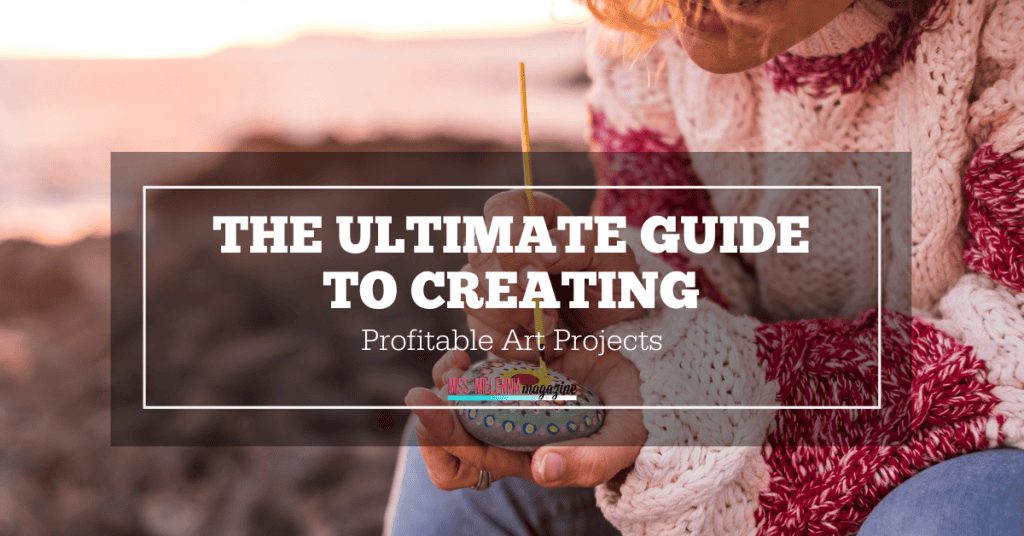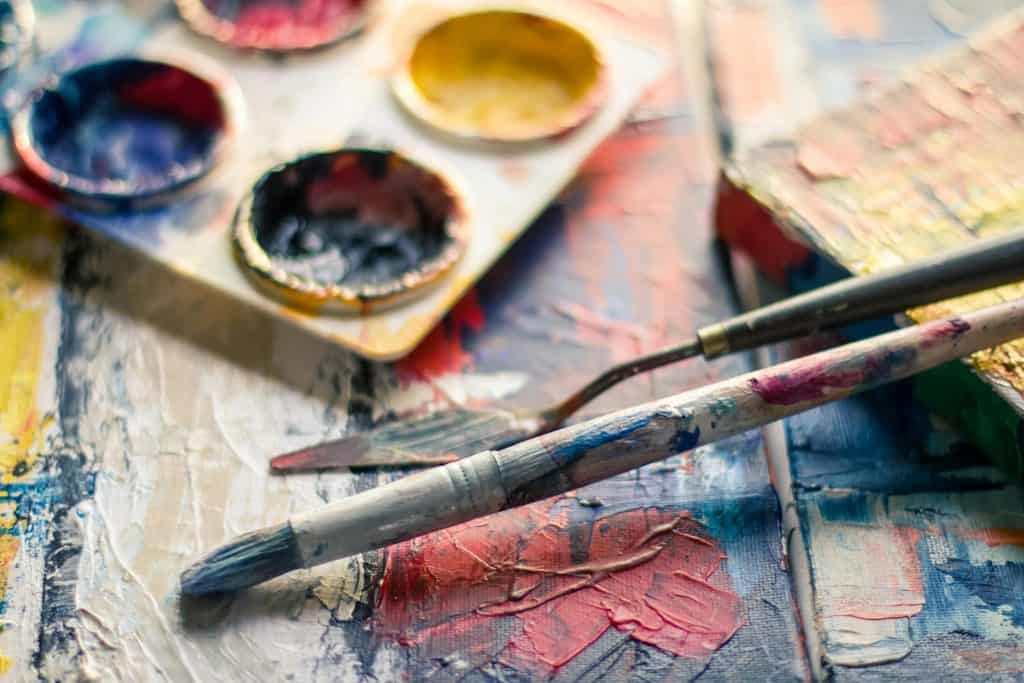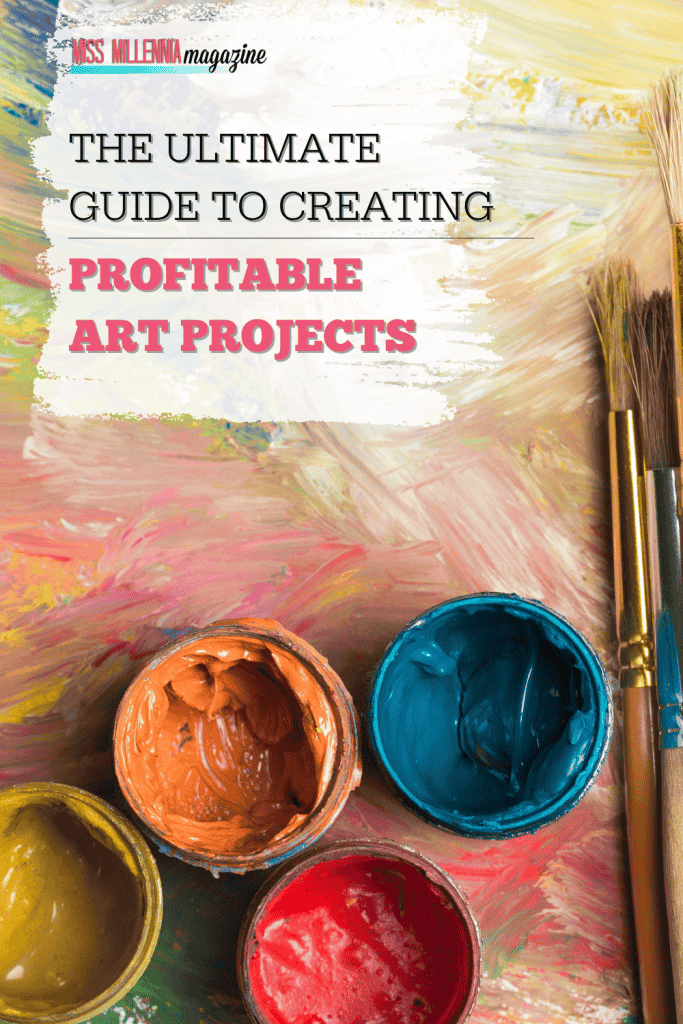The Ultimate Guide to Creating Profitable Art Projects

Art is more than just a medium for creative expression. It also offers opportunities to generate profit, turning passion into a sustainable career.
The beautiful thing about this is that anyone with dedication and the right strategy can make their art financially rewarding. From leveraging online platforms to understanding market trends, there are numerous ways to create art that sells.
This blog post will explore the ultimate guide to creating profitable art projects, providing strategies, tips, and insights to turn your artistic endeavors into lucrative opportunities.
Understanding Market Trends in the Art Industry
Grasping market trends is vital for artists aiming to create profitable art projects.
Staying updated on developments and consumer preferences enables them to align their work with market demands. Through comprehensive market research, artists can uncover insights into sales trends, consumer behavior, and emerging patterns, guiding the creation of in-demand and selecting effective sales channels.
Identifying niche markets also offers a competitive advantage, allowing one to cater to specific demographics or interests and build a loyal audience.
Additionally, the art market’s shifting consumer preferences, driven by cultural, technological, and global changes, demand artists’ styles, themes, and marketing flexibility.
Leveraging Digital Platforms for Art Sales
Online marketplaces and e-commerce websites provide artists with a global platform to reach a broader audience. Platforms such as Etsy, Amazon Handmade, and ArtFire allow artists to list and sell their handmade creations to a vast online community of art enthusiasts.

Social media has also become a powerful tool for artists to showcase their work, connect with potential buyers, and build a loyal following. Platforms like Instagram, Facebook, and Pinterest allow artists to visually engage their audience, share their creative process, and promote their artwork directly to consumers.
Incorporating digital marketing strategies such as search engine optimization (SEO), email marketing, and online advertising can significantly impact an artist’s online visibility and sales. By strategically promoting their art projects across various digital channels, artists can increase their chances of reaching potential buyers and driving sales.
How to Develop a Unique and Marketable Art Style
In a saturated art market, developing a unique and marketable art style is essential for artists to differentiate themselves and attract buyers. Here are some critical considerations for artists looking to carve out a distinctive artistic identity:
Finding Your Artistic Voice
Finding your artistic voice involves expressing your unique perspective, experiences, and emotions through artwork. Whether through a specific subject matter, a distinct visual aesthetic, or a particular artistic technique, finding your creative voice can help your work resonate with audiences and stand out in the market.
Creating Consistent and Cohesive Artwork
Consistency in artistic style and thematic coherence can contribute to a solid and recognizable artistic brand. Whether you were asked to create a custom watercolor painting or a pencil sketch, developing a cohesive body of work that reflects your creative vision and maintains a consistent quality can help build trust and recognition among collectors and art enthusiasts.
Understanding the Value of Originality in Art
Originality is highly prized in the art world, and artists who can offer unique and innovative perspectives through their work often command higher value and demand. Embracing originality involves pushing creative boundaries, experimenting with new ideas, and avoiding derivative or imitative approaches to art-making.
How to Build a Strong Professional Network in the Art Industry
Networking and building professional relationships within the art industry can open doors to collaborative opportunities, exposure, and potential sales. Here’s how artists can cultivate a solid professional network:

Collaborating with Other Artists and Creatives
Collaborating with fellow artists and creatives can lead to mutually beneficial projects, shared resources, and expanded reach. Whether it’s through joint exhibitions, creative partnerships, or collective marketing efforts, collaboration can enhance an artist’s visibility and innovative repertoire.
Establishing Relationships with Art Collectors and Galleries
Connecting with art collectors, galleries, and curators can give artists access to exhibition opportunities, art sales, and representation. Building rapport with collectors and galleries involves attending art events, participating in art fairs, and maintaining professional communication and presentation of artwork.
Leveraging Networking Events and Art Exhibitions
Attending networking events, art fairs, and exhibitions can facilitate meaningful connections with industry professionals and potential buyers. These events allow artists to showcase their work, meet like-minded individuals, and stay abreast of industry trends and opportunities.
What are the Different Revenue Streams in the Art Business?
Diversifying revenue streams is an intelligent strategy for artists looking to maximize their income and expand their craft business. Here are some avenues for artists to diversify their revenue streams:

Art Licensing and Merchandising
Art licensing and merchandising involve granting the rights to reproduce and sell artwork on various products such as prints, apparel, home decor, and accessories. Exploring licensing agreements and merchandise partnerships can provide artists with passive income and broader exposure to their art.
Offering Art Workshops, Classes, and Private Lessons
Sharing artistic expertise through workshops, classes, and private lessons can generate additional income for artists while fostering community engagement and education. Whether teaching art techniques, hosting creative retreats, or offering personalized instruction, sharing knowledge can be a rewarding revenue stream.
Monetizing Art Projects
Artists can leverage their expertise by writing about art, contributing to art publications, or speaking at events and conferences. Monetizing art-related content through writing articles, books, or delivering presentations can establish artists as thought leaders and generate supplementary income.
Conclusion
Creating profitable art projects involves a multifaceted approach encompassing market awareness, strategic business decisions, and artistic integrity. By understanding market trends, leveraging digital platforms, developing a unique art style, setting realistic financial goals, building a solid professional network, diversifying revenue streams, protecting artistic and intellectual property, and balancing creativity with commercial viability, artists can position themselves for success in the competitive art industry. Whether you’re a seasoned professional or just starting, implementing these strategies and insights can help you maximize your artistic endeavors and achieve financial success in the ever-evolving art world.







